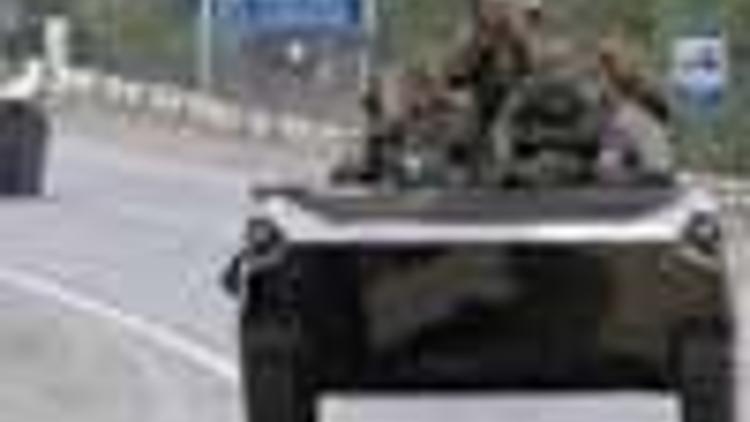Russia armor seen pulling back from Georgia
Güncelleme Tarihi:

A column of Russian armor withdrew from central Georgia on Thursday in what the Defense Ministry in Moscow said was the start of a pullback of forces, Interfax reported.
A Reuters cameraman in the South Ossetian capital Tskhinvali saw dozens of tanks and armored personnel carriers arriving in the town from the south. The Interfax news agency said the column was heading north towards the Russian border.
The Kremlin had promised to pull back Russian forces from core areas of
While reporting the movement of the armored convoy from central
The
The West fears
The crisis erupted on Aug. 7-8 when the small Caucasus state, which has a border with
Russian forces hit back, thrusting beyond the region into the Georgian heartland, overrunning the army in fierce fighting.
Diplomacy at the U.N. Security Council to end the crisis moved up a notch when
A Reuters reporter at Verkhny Zaramag, on the border between
He saw eight armored personnel carriers, followed by three T-72 main battle tanks. The tanks had markings on their turrets in Latin script. Russian armor has Cyrillic markings.
Earlier, the reporter saw about 40 trucks covered with tarpaulins, some apparently empty, crossing the frontier.
Russian checkpoints were still in place on the axis road between Igoeti, the closest Russian presence to the capital,
"Both the size and pace of the withdrawal needs to increase and needs to increase sooner rather than later... I don't think they need any more additional time," White House spokesman Gordon Johndroe told reporters aboard Air Force One.
DIPLOMATIC WRANGLING
The Kremlin has said some of its troops would withdraw to a buffer zone on Friday.
"The remaining portion of the contingent that was sent to reinforce the Russian peacekeeping mission will withdraw to the
It appeared unlikely
Despite diplomatic wrangling,
"There will definitely not be a cold war," Dmitry Rogozin told Reuters in a telephone interview.
Photo: Reuters

